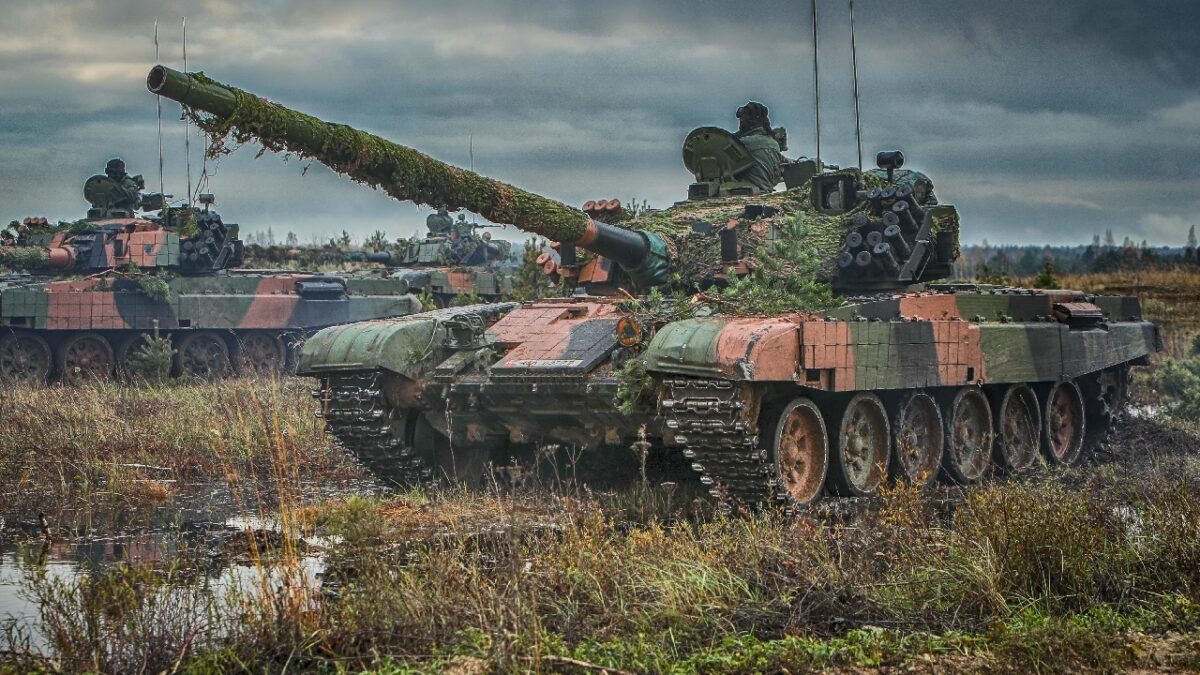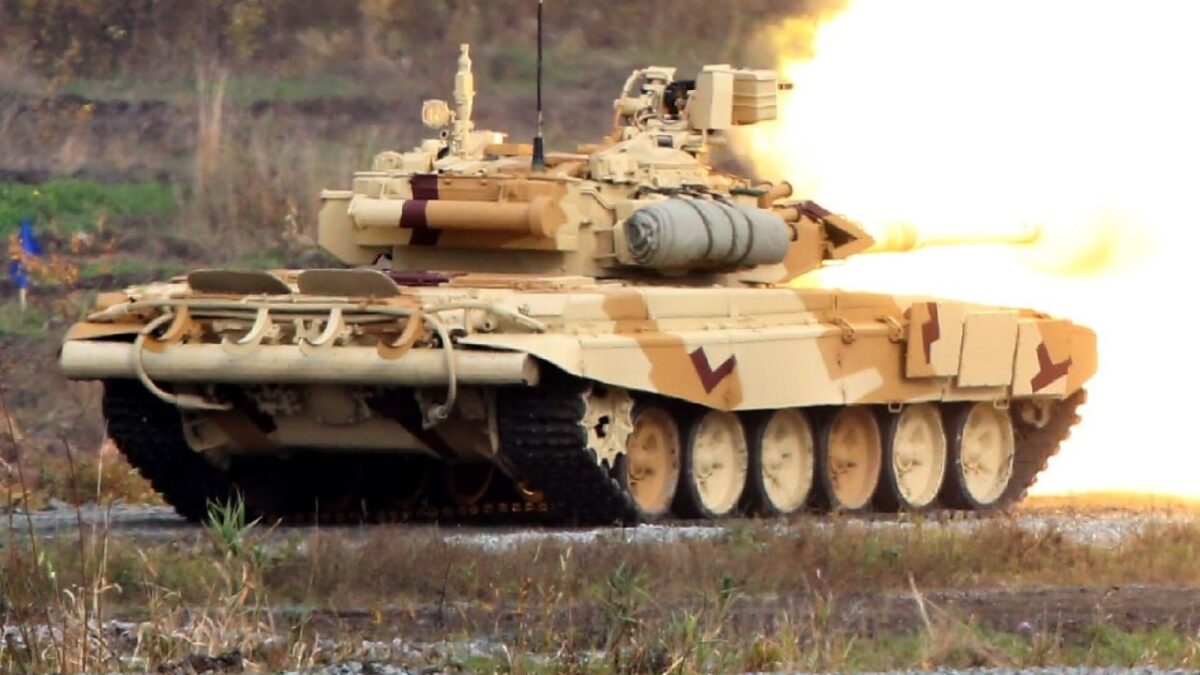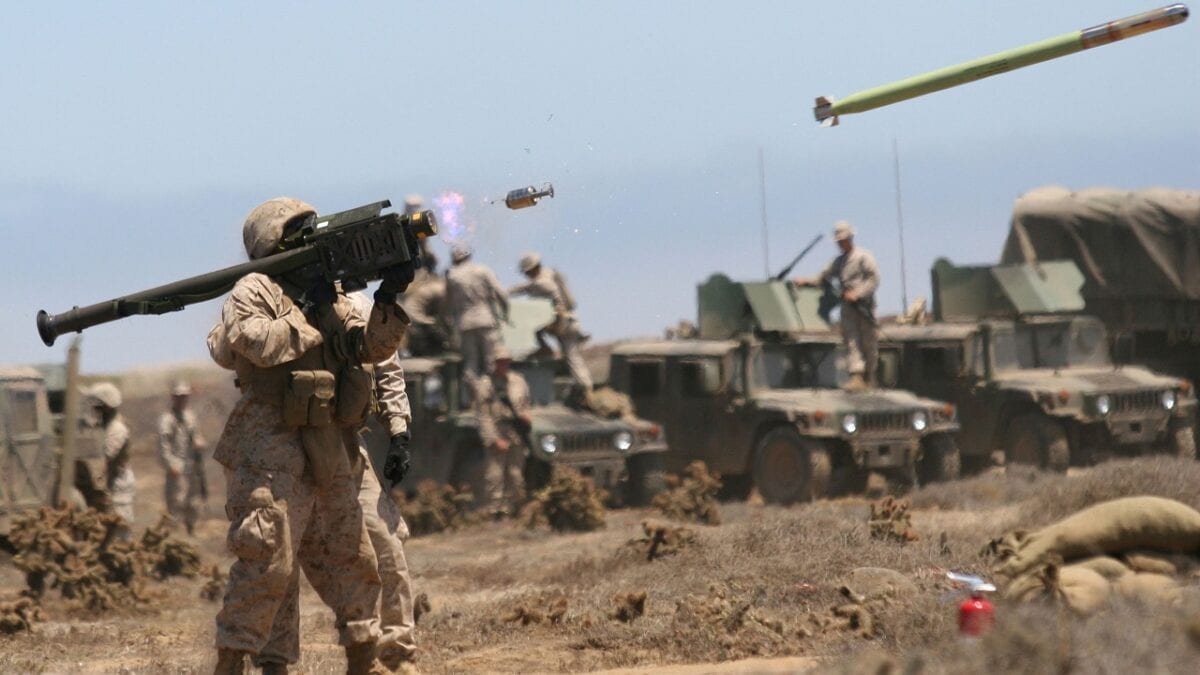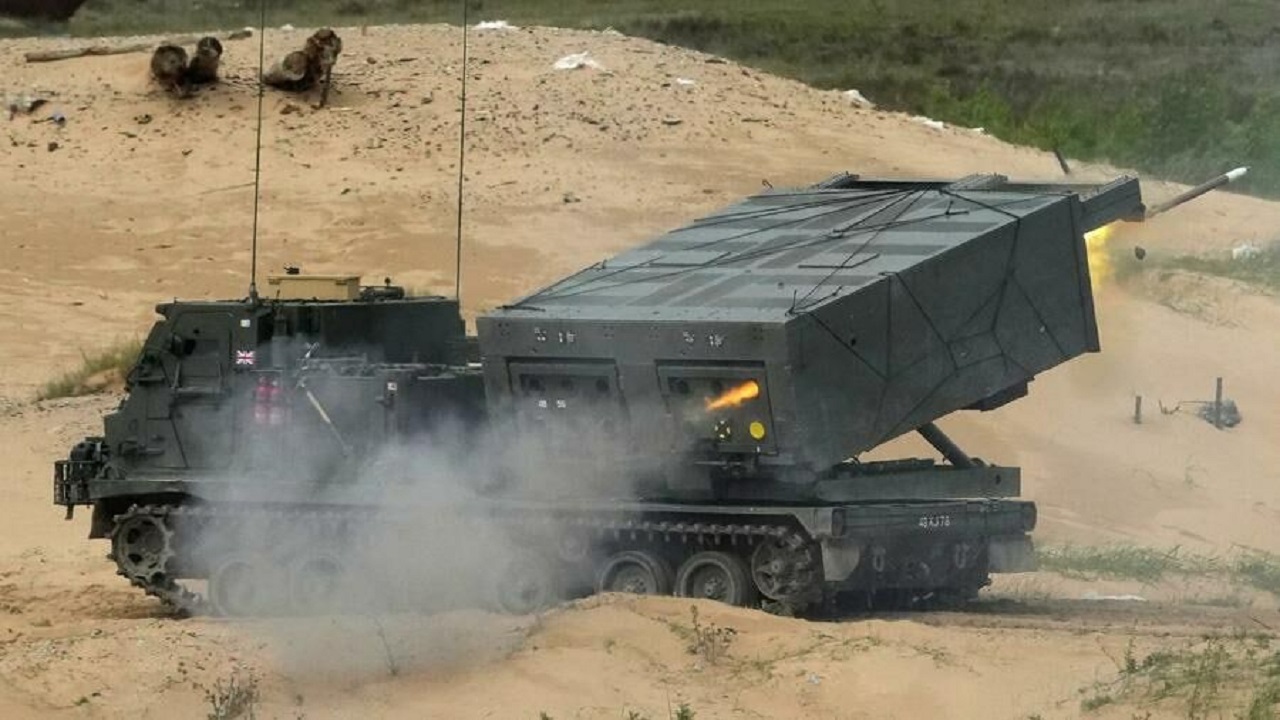What Happens Next in the War in Ukraine? Ukrainian President Volodymyr Zelensky took a significant risk by ordering two counteroffensives earlier this month, one in the Kherson Oblast and one in the Kharkiv Oblast. As discussed in Part I of this analysis (you can read here), conditions were trending against Zelensky and left him with little choice. The Kherson strike group has thus far failed to achieve its objectives. The force that made the attack in the Kharkiv direction caught Russia completely unprepared and provided a dramatic success.
(Author Ret. LT. COL. Daniel Davis discussing the situation in Ukraine on Fox News)
It is essential, however, to understand why the Kherson operation failed, why the Kharkiv attack succeeded, and what the results indicate as the war enters its first winter. Key to ascertaining what comes next will be to examine the likely responses Russia makes, especially to the success in the Kharkiv Oblast.
Prelude to Launching the Attacks
In a mid-May analysis of the then three-month-old war, I explained on these pages the strategy Russia adopted following its withdrawal from Kyiv. I also looked at Ukrainian responses, dispositions, and options for future offensive actions. In it, I explained what Russia was doing in the Kharkiv and Kherson fronts, and what potential vulnerabilities their course of action levied on them. In part, I wrote:
Russia appears to have chosen to simultaneously conduct what’s called economy-of-force missions near Kharkiv in the north and in the Kherson region in the south. The idea behind an economy-of-force mission is that an army will use as few troops as possible to accomplish a supporting task so that it may apply the majority of its combat power to achieve the main objective.
In this case, that means having enough Russian troops in the Kharkiv and Kherson areas to hold the Ukrainian troops defending the respective regions in place so they are unable to either attack Russian flanks on the Donbas’ northern or southern shoulders or to reinforce the Ukrainian lines on its side of the Donbas. Either outcome would put Russia’s battle plan at risk.
On the Ukrainian side, I explained how they might frustrate Russia’s plans:
Kyiv appears to be pursuing a strategy in the Kharkiv/Donbas fight that has the potential to either upend the Russian plan – or play right into it. If Ukraine troops are able to continue the counterattack and destroy the three Russian BTGs, it is possible they could then pivot south towards the Russian attack on the northern shoulder of the Donbas, forcing the Kremlin to either pull forces from elsewhere to stop the UAF drive, or the Ukrainians could send that combat power to aid its troops on their side of the fight to make Russia’s battle much more difficult.
As is now becoming clear, that is very nearly exactly how events unfolded. As the months passed and Russia continued putting the vast majority of its energy into slowly grinding the Ukrainian troops in the Donbas, they paid less and less attention to their thin forces on both the northern and southern fronts. Zelensky made a risky, but so far successful, move by exploiting Russia’s go-slow action in the Donbas by building combat power out of contact and preparing to hit Russia’s comparatively thin lines in Kharkiv and Kherson.
For understandable reasons, the Western media has virtually ignored the results of Ukraine’s first offensive, which started in the Kherson front on August 29. As I had been warning in the weeks before that operation, Ukrainian troops would have to cross the open Steppe, exposing their troops to the strength of the Russian force, their artillery, rockets, and air power. When Zelensky’s troops did pull out of their defensive positions and came into the open, they did suffer heavy casualties.
It is painfully difficult to get accurate battlefield information in this war that is chocked full of misinformation and outright disinformation, peddled by both sides and their many supporters. One source that has proven the most accurate has been Austrian Col. Markus Reisner. He has posted numerous official video assessments of the fighting almost from the start of the war, and his detailed descriptions of progress or failures of each side have stood the test of time as being accurate.
On Wednesday, he posted an analysis of Ukraine’s twin offensives of both Kherson and Kharkiv and confirmed that the Kherson operation was nearly a complete failure, as the Ukrainian troops suffered heavy casualties from Russian artillery, rockets, and air strikes, and as a result, did not appear to have accomplished any of their territorial gains, and the lines are remarkably nearly unchanged from before. In the Kharkiv direction, however, the Ukrainians were much more successful.

A Russian tank destroyed by what is most likely a ‘Jack in the Box’ effect.
As I noted in my May 2022 assessment, the Russians had initially staffed the Kharkiv front with minimal numbers of troops. Over time it appears the Russian leadership got sloppy or overconfident, and believed that Ukraine would not attack in that sector and pulled some of the troops out of their positions to join in the Donbas or to reinforce their troops in the Kherson direction. Before Ukraine’s attack, most of the remaining Russian troops were volunteers who had little, if any, combat experience.
Russia also suffered from an egregious failure of intelligence. As Col. Reisner pointed out, Ukraine did an outstanding job of covertly building combat power in preparation for the northern attack. There were some rumors of a looming attack, but apparently, the Russian commanders ignored it. In any case, they made no preparations and were completely surprised when the Ukrainian hammer fell.
As I have covered in detail in other analyses, the Ukrainian Armed Forces (UAF) have lost considerable equipment to Russian attacks over the past six months, and the sum total of all equipment provided or promised by the West is not a fraction of what’s needed to conduct a theater-level offensive operation capable of driving Russia out of Ukraine. It has been, however, enough to conduct a local counterattack if the equipment were to be concentrated in limited geographic locations.
Kyiv concentrated the best of the Western equipment it has received, including T-72 tanks from the Czech Republic and Poland, self-propelled howitzers from Germany, Multiple Launch Rocket Systems (MLRS) from Great Britain, and armored personnel carriers and M777 howitzers from the U.S. Ukraine concentrated the best of its equipment and most trained troops into two counterattack groups: Kherson and Kharkiv.
The Ukrainian Strike at Kherson
Zelensky ordered the first blow to fall in the Kherson region against the relatively thin line of Russian defenders. Repeated Ukrainian missile attacks against Russian ammunition depots and bridges spanning the Dnipro River in the weeks before launching the assault made the Russian defenders weaker, as they could not get sufficient reinforcements or supplies over the damaged bridges.
The long-range fires, however, limited Russian resupply but did not stop it. As feared, when the UAF left its defensive positions opposite Kherson and crossed into the open steppe, they became vulnerable to Russian fires. No amount of kit, no matter how modern, can withstand the significant volumes of artillery, rockets, and missiles the Russians dropped on Zelensky’s forces near Kherson. Moreover, owing to the months of public vows of a Kherson offensive, Russia was more than ready for this attack and had reinforced their troops.

PT-91 tank from Poland heading to Ukraine. Image Credit: Creative Commons.
Though reliable information is still challenging to find, a growing consensus of sources reveals that the Ukrainian attack at Kherson made only limited advances along three axes, suffering heavy casualties in the process. The UAF made some penetrations against the Russian line in the center, but generally, the Russians held their ground. On Wednesday and Thursday, Russian airstrikes destroyed two dams along the Inhulets River, reportedly swamping the UAF bridgehead over the river, and cutting off their main source of supply. If the Russian troops succeed in destroying the bridgehead at Andriivka, the UAF will have been driven back to their start point, having suffered heavy casualties while gaining no ground. The results on the Kharkiv front, however, had a dramatically different result.
UAF Drives Russia Back in Kharkiv
In the north, in contrast, Russia was not expecting an attack, had thinned out its troop strength, and the Ukrainian side was able to enter through some forested terrain that made it difficult to detect and target. The results were highly successful for Ukraine, as the Russian troops were taken totally by surprise and were quickly faced with the options to fight to the death or conduct a fighting withdrawal. The Ukrainian side had chosen the former in Mariupol and Severodonetsk and suffered major troop losses as a result (as well as the territorial loss). Russia chose the latter, and in doing so limited the scale of its losses.
Austrian Army Col. Reisner pointed out that Ukrainian troops used battlefield deception masterfully, by racing ahead with initial penetration units, knowing that the Russian defenses were sparse, and planted Ukrainian flags on buildings in towns far to the rear of the starting lines. They then blasted these images out on social media, knowing the Russians would be watching, giving the impression that they had made major penetrations with large forces into the Russian rear. It appears at least some of Moscow’s troops believed the videos and hastened their withdrawal to the east.
It was here, however, that Putin’s troops started stabilizing the situation. Russian tactical commanders identified the best natural barrier that could stop an assaulting force, and selected the Oskil River, which runs north-and-south and would provide a strong natural barrier. Showing some dexterity, Russian forces started flying in reserve troops and heavy equipment via heavy transport Mi-26 helicopters, staging them on the far side of the Oskil, forming a new line of defense, while rapidly withdrawing its troops west of the river to ensure they didn’t get cut off and destroyed.
Because there were so few Russian troops in the Kharkiv front to begin with, after the bulk of Moscow’s forces had been withdrawn beyond the Oskil, the Russian command had little choice but to completely withdraw all of the troops north of Kharkiv, some fleeing across the Russian border. The result was that Ukraine regained control of a massive swath of land, reported to be upwards of 6,000 square kilometers. While that is a major accomplishment, it is necessary to keep things in perspective, especially in terms of what it means for the rest of the theater and future of the war.

Russian T-90 Tank. Image Credit: Creative Commons.
What it Means for the War
The impression many have is that Ukraine drove a major Russian force out of a massive part of the country and imposed a major strategic defeat on Russia, possibly signaling Ukraine may be on track to win the war. The truth, however, is that while the Kharkiv operation was a very well crafted, effectively executed, operation that succeeded beyond Kyiv’s expectations, it involved relatively small numbers of Russian soldiers. Even in this victory, the Ukraine side reportedly suffered significant casualties and combat gear.
The true measure of the Ukrainian offensive capacity and potential to drive Russia out will come when they take on Russians in strength. For example, can the UAF conduct an offensive to push the Russians any distance from current positions in the Donbas? If so, that would represent a genuine, major accomplishment. Battlefield ‘math,’ however, would seem to indicate the balance of power is still in Russia’s favor.
Following the Ramstein meeting of Western defense ministers, headlines across the West trumpeted the commitment of nearly $3 billion in new aid for Ukraine. Under the massive dollar figure, however, was the revelation that the only new combat platforms included in the package was a curiously a single platoon’s worth (four cannons) of the smallest howitzers with the shortest range in the U.S. inventory, 105mm towed guns.
When combined with the list of all other combat platforms provided or promised to date, it strongly implies the Ukraine Army massed a significant majority of all its modern gear for the two offensives in Kherson and Kharkiv. Meaning, it is unlikely there are even enough tanks, armored personnel carriers, and self-propelled artillery pieces to prevent Russia from continuing its westward drive in the Donbas, and could mean Ukraine has insufficient current strength in either the Kherson or Kharkiv to defend against a concerted Russian counterattack. The big question: how much striking power does Russia have?
However many casualties the UAF suffered in their two offensive drives, they certainly inflicted considerable losses in personnel and equipment on the Russians as well. Yet there continue to be reports (presently uncorroborated via Western media) that Russia has been moving large numbers of armored vehicles, including their most modern T90 tanks, into occupied Ukrainian territory. The next real indication for where the war is finding out how Putin responds to these attacks.
Evidence is increasing that the Russian troops in Kherson have contained the Ukraine offensive and have largely held the lines. After the Ukrainian troops drove Russia out of the Kharkiv region past Izyum, the Russians have generally reestablished a stable line near Krasny Leman and along the Oskil River. The Russians continue attacking west in the Donbas, continuing to make incremental progress towards Bahkmut and Soledar.

Russian Su-25s. Image Credit: Creative Commons.
The big questions right now: will Putin attempt a signature response and escalate the scale and scope of his attacks in Ukraine? Has he been covertly building armored combat power out of contact, as Zelensky did in the weeks prior to launching the Kharkiv attack, and will there be the sudden appearance of Russian tanks at an unexpected part of the Ukraine line? At this point no one knows, but based on his history, it seems more likely as not that Putin will not passively take the humiliation he suffered when Zelensky drove his troops out of Kharkiv region. Some sort of retaliatory strike or counterattack seems likely.
An equally big question: will the West, led by the United States, provide Ukraine with the type and number of heavy weapons Zelensky has been requesting for months? For Ukraine to have a chance to hold their ground and later have even the potential to drive Russia out of their country, Western countries are going to have to surrender hundreds of modern tanks, rocket launchers, armored personnel carriers, and self-propelled howitzers, including many hundreds of each – all of which must come from their primary stocks and will necessarily weaken their own capacity to provide for their own defense. It is unclear whether any Western nation will agree to make such a sacrifice.
Lastly, there is the looming issue of increasing economic cost on Western populations as sanctions on Russian oil, gas, and agricultural products continues to have cascading consequences across the globe. Already there are grave dangers that there may not be enough gas in Europe to heat homes and power business. Additionally, there is real risk of recession, both in the U.S. and Europe. Whether and how much the West will continue providing Kyiv with combat platforms and financial support is unknown.
The bottom line: there is a great deal of uncertainty on the course of the war, and in the near term, neither side can claim to be winning. The longer the war goes on, however, the more likely that Russia comes out on top, if only because they have the most resources and personnel, which in the history of warfare frequently determines the victor.

Stinger missile being fired. Image Credit: Creative Commons.
Conclusion
In wrapping up this analysis, I harken again back to my May 2022 assessment, because the fundamentals are little changed. Despite the significant number of tactical wounds inflicted by one side or the other since this war started – Russia’s capture of Mariupol, Severodonetsk, and Lysychansk; Ukraine’s sinking of the Moskva, introduction of the HIMARs, and the success in the Kharkiv region – the trend of the war remains surprisingly steady.
What I published in May is still valid:
War is a very dynamic, unpredictable affair, and what appears to be momentum by one side can often be reversed a short time later by the opponent. Up to this point, the strategy the Russians appear to be using in their attempt to capture the Donbas and destroy the UAF defenders there is making progress. However, it remains possible that the Ukrainian counterattacks in the Kharkiv region could derail the Russian plans. Yet…the most likely outcome of this fight is that Russia will prevail in the Donbas.
Now a 1945 Contributing Editor, Daniel L. Davis is a Senior Fellow for Defense Priorities and a former Lt. Col. in the U.S. Army who deployed into combat zones four times. He is the author of “The Eleventh Hour in 2020 America.” Follow him @DanielLDavis

